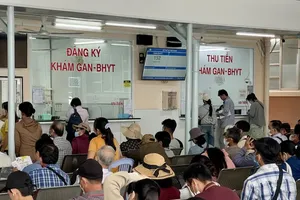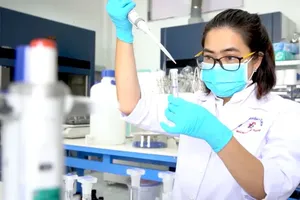
Globally, it contributes to 4.6 percent of all deaths and incurs healthcare expenses amounting to billions of US dollars annually.
On April 5, in Hanoi, the Vietnam Young Physicians Association partnered with the National Hospital of Endocrinology to host an event commemorating World Health Day (April 7) and World Kidney Day and launch cardiovascular and kidney disease screening program.
During the event, Mr. Ha Anh Duc, Head of the Ministry of Health's Office and Chairman of the Vietnam Young Physicians Association, highlighted chronic kidney disease as a progressive, high-incidence non-communicable illness often undiagnosed and inadequately addressed promptly. It poses a significant burden on patients, families, society, and the national healthcare system. However, the current rate of missed diagnoses for chronic kidney disease remains unacceptably high, especially in the early stages due to atypical symptoms. Only approximately 4.5-15.5 percent of stage-3 chronic kidney disease patients are diagnosed. Notably, there is still a high rate of missed diagnosis among high-risk groups, such as those with hypertension and diabetes.

According to the World Health Organization, chronic kidney disease is a non-communicable condition primarily triggered by diabetes and hypertension. It is also a significant public health challenge. Globally, it has contributed to 4.6 percent of deaths and was the 12th leading cause of mortality in 2017. Healthcare expenses associated with treating chronic kidney disease can reach billions of US dollars annually, comprising 2.4 -7.5 percent of a country's annual healthcare expenditure, with particularly steep rises in costs for artificial kidney services.
Hence, early diagnosis and treatment of chronic kidney disease, alongside efforts to delay the decline in kidney function and provide kidney replacement therapy, promise substantial and enduring economic benefits. Simultaneously, these measures alleviate the burden on the healthcare sector.
In Vietnam, over 8.7 million adults suffer from chronic kidney disease, comprising 12.8 percent of the population. Currently, more than 400 facilities provide artificial kidney and dialysis treatment services for approximately 30,000 end-stage renal disease patients annually. However, this only meets 30 percent of the nationwide demand for dialysis. As part of the program, doctors have conducted examinations and screened for diseases among 1,000 individuals at risk of cardiovascular and chronic kidney diseases. Additionally, they helped install healthcare software to manage chronic diseases for many people.
























